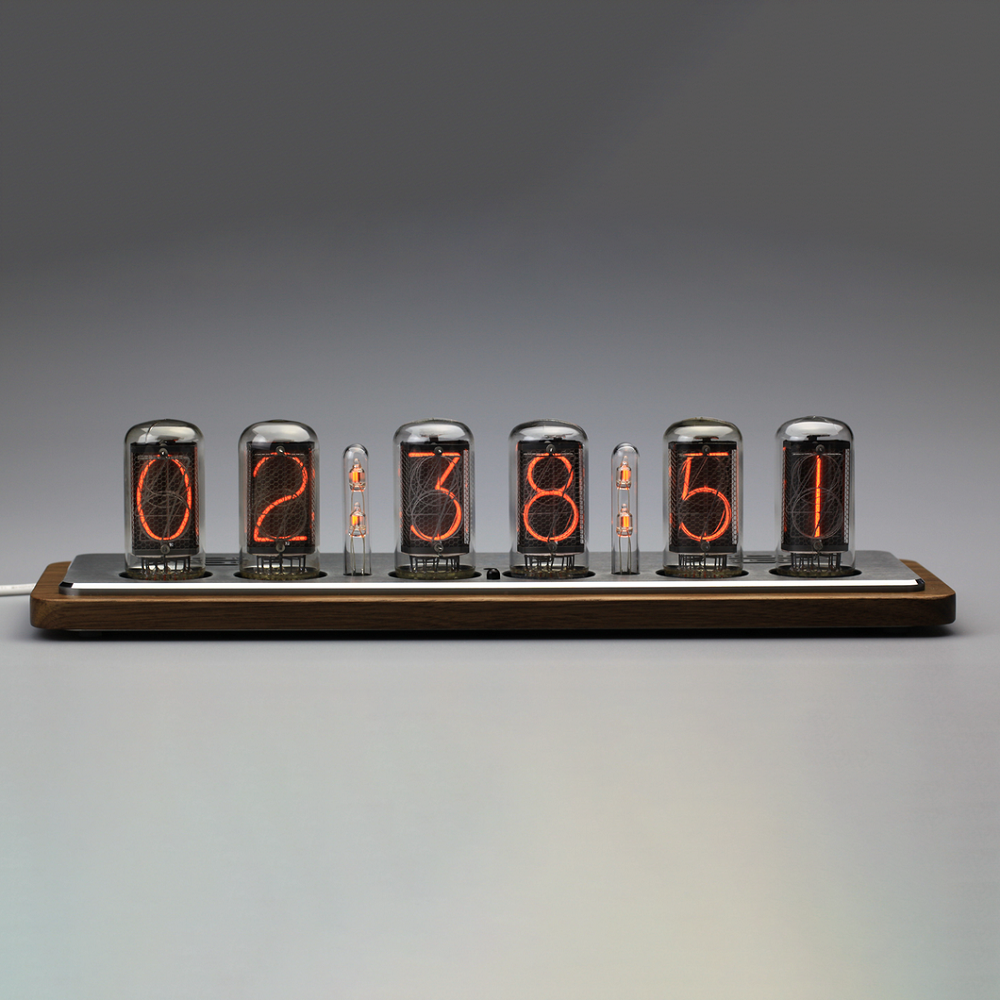In the ever-evolving world of timekeeping technology, two distinct styles stand out: Nixie tube clocks and digital clocks. Both serve the primary function of dispensing the time but do so with unique aesthetics and characteristics that cater to differing preferences. This article explores the contrasts and complements offered by these timepieces, delving into their histories, functionalities, aesthetics, and suitability for various spaces.
Understanding Nixie Tube Clocks
The History of Nixie Tubes
Nixie tubes were developed in the 1950s and became a staple in the electronics industry for displaying numerical data. Originally used in scientific equipment and early computing technology, Nixie tubes feature a glow from neon gas, which illuminates particular digits. This retro technology became somewhat obsolete with the rise of LED and LCD displays, yet in recent years, Nixie tube clocks have enjoyed a resurgence as vintage aesthetics have gained significant traction.
Nixie tubes’ revival ties in with a broader trend of appreciating analog technologies, where the charm of old meets modern design. On a historical level, Nixie clocks represent a bygone era of innovation, and they evoke nostalgia not only for the gadgets of the past but also for the design philosophies that cherished function and form.
How Nixie Tube Clocks Work
Understanding how Nixie tube clocks operate may provide insight into their allure. These clocks utilize a series of glass tubes, each containing a gas-filled environment, typically neon. Each digit is represented by a cathode shaped like the number it displays. When a voltage is applied, the gas glows, illuminating the specific digit. The unique feature of Nixie tubes is their ability to display numbers in a warm, inviting glow.
Nixie clocks require a dedicated circuitry system to function accurately, often incorporating microcontrollers to adjust time settings, alarm features, and lighting effects. This adds a layer of craftsmanship that many enthusiasts appreciate, as each clock can be handmade, tailored, or modified, showcasing individuality—perhaps even mixed with modern enhancements like Bluetooth or Wi-Fi connectivity.
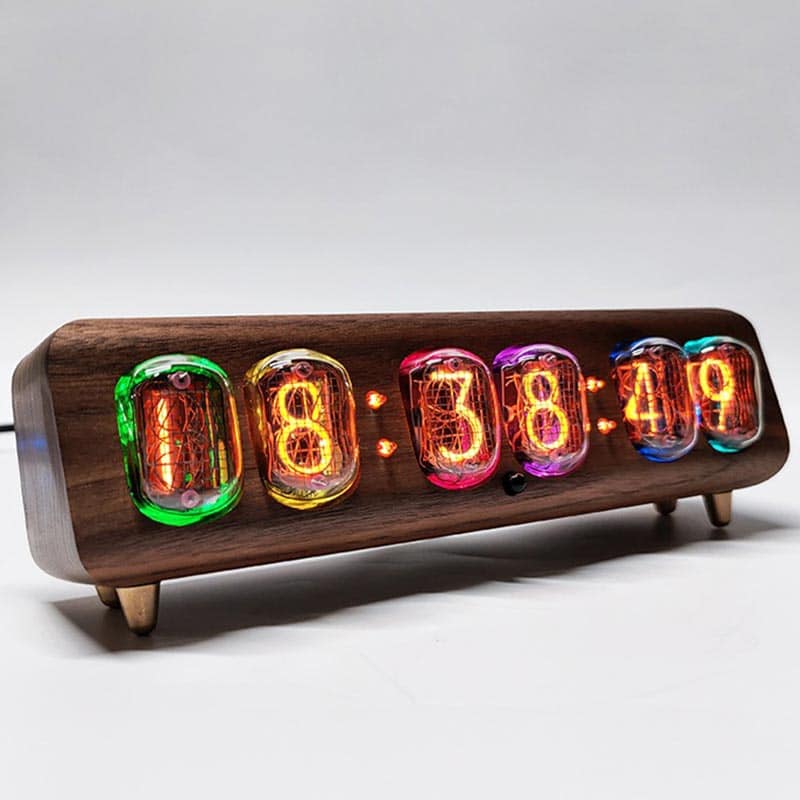
Exploring Digital Clocks
The Evolution of Digital Clocks
The digital clock, in contrast to Nixie tubes, has a more recent origin. Emerging in the late 20th century with the development of semiconductor technology, the digital clock quickly became a staple in households and industries alike. The straightforward functionality of displaying time in numbers without any moving parts contributes to its popularity.
Digital clocks evolved from simple two-digit displays to more complex systems that include alarm settings, timers, backlighting, and various display modes. This rapid evolution reflects technological advancements, with many digital clocks now integrating smart technology. Features such as smartphone connectivity or the capability to sync with home assistant systems have made digital clocks not just timekeeping devices but integral parts of smart homes.
The Mechanism Behind Digital Clocks
Digital clocks rely on electronic circuitry to non-mechanically count time. A quartz crystal generates a precise frequency, providing accurate timekeeping. This frequency is converted into digital numbers displayed via LED or LCD screens. The simplicity of this mechanism is one of the reasons why many people favor digital clocks, as they are reliable and demand little maintenance.
While the precision of digital clocks is commendable, some argue that their straightforward design lacks the warmth and character that vintage clocks provide. As most digital clocks are mass-produced, they may not invoke the same personalized feel as a handcrafted Nixie clock, yet their ubiquitous nature suits modern needs for speed, efficiency, and readability.
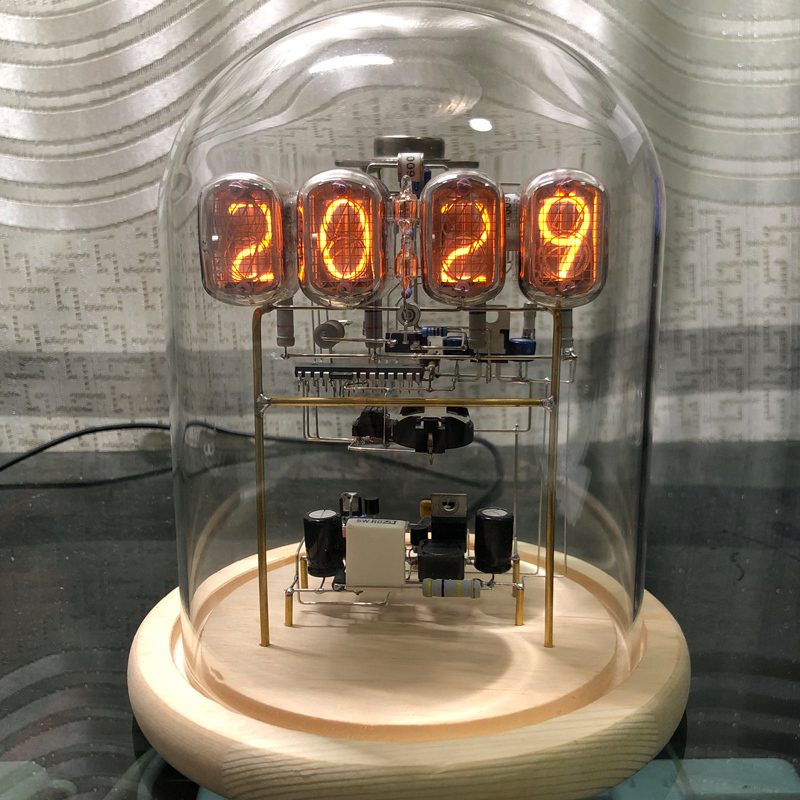
Aesthetic Appeal of Nixie Tube Clocks
Vintage and Retro Vibes
The aesthetic charm of Nixie tube clocks is undeniable. Their vintage appeal resonates most profoundly with those who appreciate the beauty of analog devices. Nixie clocks often come with wooden casings and intricate designs that reflect craftsmanship, contrasting sharply with the sterile quality of plastic or metal digital clocks. This retro vibe often attracts collectors and enthusiasts eager to display these pieces as functional art.
Another notable trait of Nixie clocks is their mesmerizing glow, which casts a soft light in dimly lit spaces. The warm hues produced by Nixie tubes can create a comforting ambiance, turning the act of checking the time into a moment of visual pleasure. This aesthetic quality offers an opportunity to blend nostalgia with contemporary interior design, appealing particularly to those who cherish artisanal goods and nostalgia-driven décor.
Customizability and Unique Designs
Because many Nixie clocks are handmade or produced in small batches, they often offer varied customization options. Enthusiasts can find designs ranging from minimalist to gloriously elaborate, catering to a range of tastes and styles. For both interior decorators and fans of unique timepieces, the customizability of Nixie clocks adds depth to their charm.
From various sizes to form factors, you’ll find clocks that fit perfectly into specific design schemes. The tubes can also be arranged creatively, giving designers wide latitude in terms of compositions. Fans of steampunk aesthetics find particular joy in Nixie clocks, which naturally lend themselves to visually striking details. This aspect makes them not just clocks but also conversation starters that stand out in any space.
The Clean Minimalism of Digital Clocks
Sleek and Contemporary Design
Digital clocks exemplify clean lines and minimalist aesthetics. Often taking up less physical space, they can blend seamlessly into modern design schemes. Many digital clocks offer various styles and colors tailored for contemporary interiors, making it easy to find models that fit specific color palettes or design philosophies.
Additionally, digital clocks often come with an array of display options, including adjustable brightness, customizable fonts, and even the ability to change colors. This level of customization fits well with today’s modern aesthetic, where simplicity and functionality trump the need for ornate designs. This sleek quality appeals to individuals who prefer a modern, clutter-free look in their spaces.
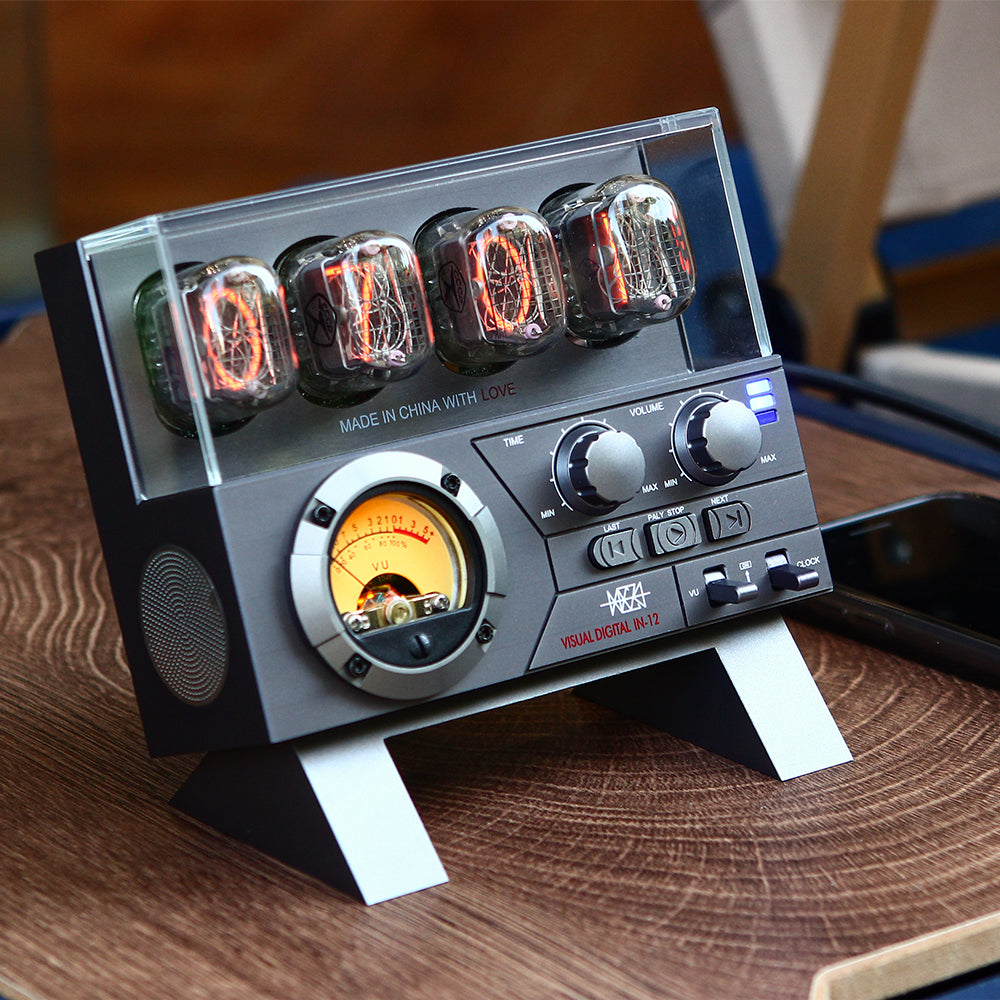
Digital Clocks in Smart Homes
The integration of smart technology into digital clocks has revolutionized their utility. Many models now sync with weather updates, traffic reports, and calendar notifications, making them not just time-telling devices but also hubs of vital information. This integration of technology serves well for those looking to streamline their daily routines with gadgets that enhance productivity.
With their connectivity to other smart devices in the home, digital clocks can control additional functions such as lighting or display customized alerts. This modern adaptability makes digital clocks particularly appealing for tech-savvy individuals who appreciate multi-functional devices that contribute to their lifestyle efficiency.
Choosing the Right Clock for Your Space
Factors to Consider
When selecting between a Nixie tube clock and a digital clock, consider your personal aesthetic preferences, lifestyle, and practical needs. Start by evaluating the space where you intend to place the clock. If the space calls for something vintage or uniquely handcrafted, a Nixie tube clock may become a focal point that sparks conversation and admiration.
If your priority lies in functionality, accuracy, and integration with smart home systems, the digital clock might be the better choice. Consider factors such as additional features you may appreciate (like alarms and easy-to-read displays) and the ambiance you’re trying to create. Choosing the right clock is about balancing the charm of the clock with your operational needs.
Personal Style and Lifestyle Needs
Another factor influencing your choice is your personal lifestyle and style preference. For those who enjoy the artistry of crafting, tinkering, or the nostalgic elements of technology, Nixie clocks can offer a fulfilling way to bring that vintage passion into their home. However, if your lifestyle favors efficiency and practicality, a digital clock might cater better to your daily needs, offering convenience without the maintenance that comes with vintage devices.
In terms of décor, think about how either clock would fit into your current design scheme. A Nixie clock has the potential to become a significant design piece in a room, while a digital clock can subtly blend in, providing ambiance without overwhelming the aesthetic.
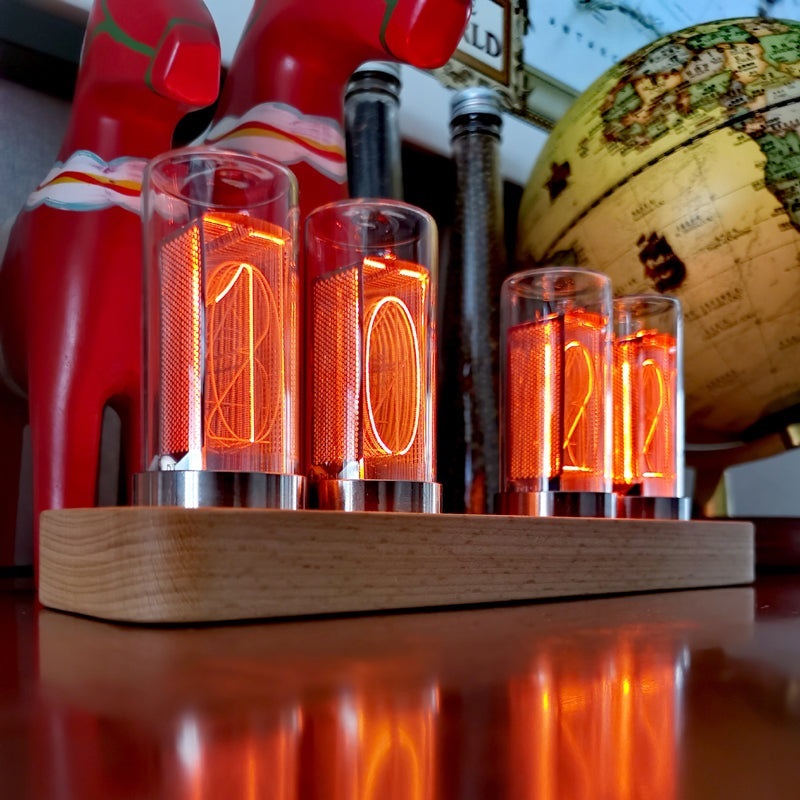
Care and Maintenance: Nixie Tube Clocks
Understanding Nixie Clock Maintenance
While Nixie tube clocks display timeless beauty, they require specific care to preserve their functionality and aesthetics. The tubes themselves can be sensitive, and maintaining them involves ensuring the right voltage to avoid burnout and extending their lifespan. It’s also advisable to handle them carefully, as they are fragile and can break if knocked over or dropped.
Furthermore, dust and environmental factors can accumulate on the clock over time. Regularly cleaning the casing and tubes can ensure clarity in the display and maintain aesthetic appeal. As many Nixie clocks are handcrafted, following explicit manufacturer guidelines for care is essential to keep these unique pieces in impeccable working order.
Troubleshooting and Repairs
As with any vintage technology, troubleshooting is sometimes necessary. Understanding basic electronics can be advantageous if a repair is needed. However, some owners may wish to outsource repairs to professionals who specialize in vintage technology. Knowing how to properly care for and troubleshoot your Nixie clock can provide peace of mind, enhancing your enjoyment of this unique timepiece.
A Nixie clock’s charm comes with responsibilities, and enthusiasts often form communities that support one another in repairs and modifications, sharing tips that can enhance longevity. Being part of these communities can deepen your connection with the device and the culture surrounding vintage electronics.
Care and Maintenance: Digital Clocks
Simplicity of Digital Clock Maintenance
Digital clocks are generally low-maintenance due to their simplistic designs. Most require little more than a change of batteries every now and then, especially if they are not plugged into a power source. Many contemporary digital clocks come equipped with battery backups to ensure you never miss a moment of time, even during power outages.
Cleaning often involves dusting the clock with a soft cloth, as condensation or grime rarely disrupt their performance. The durability of digital clocks often comes from the materials—plastic, glass, or metal—that they utilize. Generally resistant to environmental factors, they require minimal specialized attention.
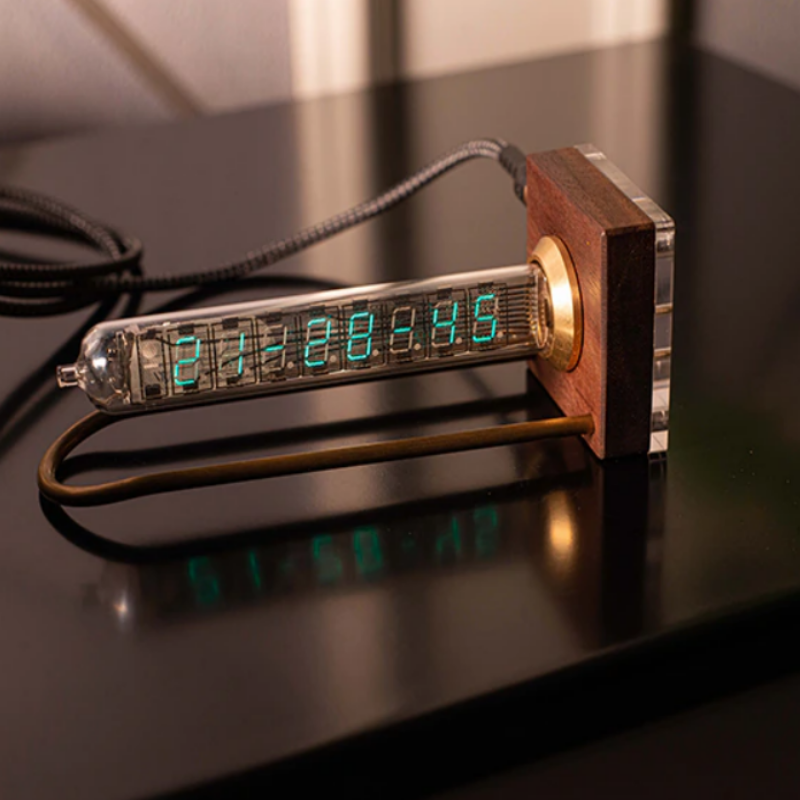
Troubleshooting and Upgrades
When problems do arise, they are typically straightforward to resolve. Common issues may involve resetting the clock or replacing batteries. Digital clocks often feature intuitive displays that help guide the user through troubleshooting processes. However, advanced digital clocks may provide upgrade paths, allowing users to update firmware or software to enhance functionalities.
The smart capabilities of many digital clocks mean they can receive updates, much like other smart devices in your home. This feature can keep your gadget modern and relevant without necessitating a complete replacement, an appeal for many users who wish to keep their technology efficient and user-friendly.
The Final Verdict: Nixie Tube Clocks vs. Digital Clocks
The Aesthetic and Functional Balance
Ultimately, the decision between Nixie tube clocks and digital clocks boils down to a blend of aesthetics and functionality. If you seek a piece of art that doubles as a timepiece, Nixie clocks can add character, warmth, and individuality to a space. Conversely, if function and adaptability are essential to your daily routine, a digital clock offers reliability, efficiency, and ease.
Finding the right clock comes down to self-awareness about what resonates with you regularly. Remember, it’s perfectly acceptable to enjoy both styles. Depending on the room’s decor and purpose—as an office space vs. a relaxing living room—you may find that a digital clock suits one setting while a Nixie clock adds charm elsewhere in your life.
Making the Right Choice for You
As you navigate the world of clocks, assess the values you prioritize in your decor and personal preferences. Whether drawn to the warm glow of a Nixie tube or the sleek lines of a digital clock, you are bound to find a timepiece that resonates with your style while meeting your practical needs. Time-telling has evolved, combining artistry with functionality, giving you an exciting opportunity to select a piece that represents both the passage of time and your unique ethos.





